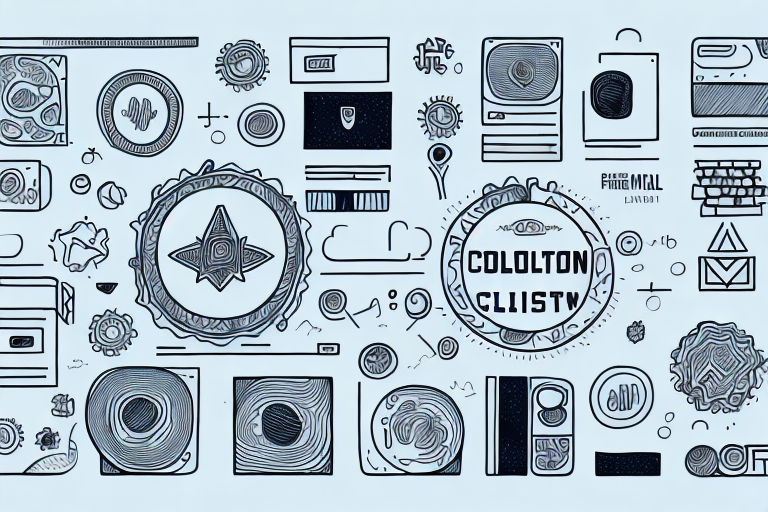In the current competitive business landscape, brand collaborations have become increasingly popular as a way to expand reach, build brand equity, and enhance customer engagement. However, finding the right brand collaboration for your business can be a challenging task. This article will guide you through the process of identifying, researching, evaluating, negotiating, and finalizing brand collaborations that align with your business needs and goals.
Understanding the Importance of Brand Collaborations
Before diving into the intricacies of finding the right brand collaboration, it's crucial to understand the significance of such partnerships. Brand collaborations involve two or more brands coming together to create joint marketing initiatives, products, or services. These collaborations can help businesses tap into new markets, increase brand awareness, and leverage each other's strengths to create innovative solutions.
When brands collaborate, they have the opportunity to combine their unique expertise, resources, and target audiences to create something greater than the sum of its parts. By working together, brands can tap into new customer segments, expand their reach, and create a buzz around their joint efforts.
One of the key benefits of brand collaborations is the ability to leverage each other's existing customer base. By aligning with a complementary brand, businesses can gain access to a whole new group of potential customers who may not have been aware of their products or services before. This can result in increased sales, brand exposure, and market share.
Brand collaborations also have the power to enhance brand perception, credibility, and trust among consumers. When two reputable brands come together, it sends a strong message to customers that they can trust the quality and value of the collaborative offering. This can help build brand loyalty and encourage repeat business.
Defining Brand Collaboration
First and foremost, it's important to have a clear understanding of what brand collaboration means. Brand collaboration refers to a strategic partnership between two or more brands, aimed at creating mutual value through shared resources, expertise, and target audience. It goes beyond mere sponsorship or endorsement and involves joint efforts to create unique offerings that resonate with customers.
Brand collaboration is not just about slapping two logos together and calling it a day. It requires a deep understanding of each brand's values, goals, and target audience. Successful brand collaborations are built on shared values and a common vision, allowing both brands to align their messaging and create a cohesive brand experience.
Furthermore, brand collaboration is not limited to a specific industry or type of business. It can occur between brands in the same industry, where they join forces to create a stronger market presence. It can also happen between brands in different industries, where they leverage each other's expertise to create innovative solutions that cater to a wider audience.
Benefits of Brand Collaboration for Your Business
Collaborating with the right brand can bring numerous advantages to your business. By aligning with a complementary brand, you can leverage their existing customer base to expand your reach. Additionally, brand collaborations can enhance brand perception, credibility, and trust among consumers. Sharing resources, knowledge, and expertise with a partner brand can boost creativity, lead to innovative product offerings, and generate new revenue streams.
In addition to these benefits, brand collaborations can also provide opportunities for cost-sharing and risk mitigation. By pooling resources with a partner brand, businesses can reduce the financial burden of marketing campaigns, product development, and other business initiatives. This can be especially beneficial for small businesses or startups that may have limited budgets.
Moreover, brand collaborations can open doors to new markets and customer segments that may have been difficult to reach on your own. By partnering with a brand that has a strong presence in a particular market, you can tap into their network and gain access to a whole new group of potential customers. This can help diversify your customer base and reduce reliance on a single market or audience.
Overall, brand collaborations have the potential to be a win-win situation for all parties involved. By joining forces, brands can create unique and compelling offerings that resonate with customers, expand their reach, and drive business growth. It's important to approach brand collaborations with a strategic mindset, ensuring that both brands align in terms of values, goals, and target audience. When done right, brand collaborations can be a powerful tool for business success.
Identifying Your Brand's Needs and Goals
Before embarking on a brand collaboration journey, it's crucial to assess your brand's identity, values, and goals. This introspective process helps you determine the type of collaborations that will align with your business strategy and resonate with your target audience.
When assessing your brand identity, it's important to delve into the core aspects that define your brand. Analyzing your brand's unique selling propositions, target audience, and market positioning will provide valuable insights. Understanding what sets your brand apart from competitors and how a collaboration can enhance your brand's appeal and reach is essential.
Take the time to thoroughly research your target audience and their preferences. By understanding their needs and desires, you can identify potential collaborations that will genuinely resonate with them. This will help you create meaningful partnerships that will not only benefit your brand but also provide value to your audience.
Setting Collaboration Goals
Clearly defining your collaboration goals is key to finding the right brand partnership. Consider whether your objective is to expand into a new market, create a new product, or increase brand awareness. Each goal will require a different approach and may lead you to different potential partners.
When setting collaboration goals, it's important to make them SMART (Specific, Measurable, Achievable, Relevant, and Time-bound). This framework ensures that your goals are well-defined and actionable. For example, instead of setting a vague goal like "increase brand awareness," you can set a SMART goal such as "increase brand awareness by 20% within six months through a strategic collaboration with an influential industry leader."
SMART goals provide clarity and allow you to evaluate potential partners effectively. By having specific metrics to measure success, you can assess the suitability of a collaboration opportunity and determine if it aligns with your brand's needs and goals.
Remember that collaboration is a two-way street. It's not just about what you can gain from a partnership, but also what you can bring to the table. Consider how your brand can add value to a collaboration and what unique strengths you can contribute. This will help you attract like-minded partners who share your vision and are eager to collaborate.
Researching Potential Brand Partners
Once you've identified your brand's needs and goals, it's time to research potential brand partners that align with your vision and values. Thorough research is crucial to finding the right collaborative partner for your business.
Criteria for Choosing the Right Brand Partner
When evaluating potential brand partners, consider factors such as brand values, target audience alignment, industry relevance, and reputation. Ensure that the potential partner has a strong brand presence, a positive reputation, and a similar level of commitment to collaboration. Compatibility and shared values are essential for a successful brand partnership.
Tools and Platforms for Finding Potential Partners
There are various tools and platforms available to assist you in finding potential brand partners. Social media platforms, industry events, and brand collaboration agencies can provide valuable insights into brands open to collaboration. Utilize online business directories and industry forums to identify potential partners with similar goals and target audience.
Evaluating and Approaching Potential Partners
Once you've identified a pool of potential brand partners, it's time to evaluate their market position and craft a compelling collaboration proposal.
Analyzing a Brand's Market Position
Conduct a thorough analysis of potential partners' market position by researching their target audience, competitive landscape, and brand positioning. Evaluate their marketing strategies, online presence, and customer engagement to ensure compatibility and potential for successful collaboration.
Crafting a Collaboration Proposal
When approaching potential partners, creating a well-crafted collaboration proposal is essential. Clearly outline the benefits and value proposition of the collaboration and how it aligns with both brands' strategic goals. Include details about joint marketing initiatives, potential product or service offerings, and the expected outcomes of the collaboration.
Negotiating and Finalizing the Collaboration
If you have successfully passed the evaluation stage, it's time to negotiate and finalize the collaboration terms with your chosen brand partner.
Understanding Collaboration Agreements
Before committing to a collaboration, ensure that you have a clear understanding of the collaboration agreement. The agreement should outline the scope of the partnership, responsibilities of each brand, intellectual property rights, financial arrangements, and the expected duration of the collaboration. Seek legal advice if necessary to ensure a fair and mutually beneficial agreement.
Tips for Successful Negotiation
During the negotiation process, maintain open and transparent communication with your potential partner. Be prepared to compromise and find mutually beneficial solutions. Clearly define roles and expectations to avoid any misunderstandings. Remember, successful collaboration requires trust, open communication, and a shared vision.
In conclusion, finding the right brand collaboration for your business requires careful planning, research, and evaluation. By understanding the importance of brand collaborations, identifying your brand's needs and goals, researching potential partners, evaluating and approaching them, and negotiating and finalizing the collaboration, you can pave the way for a successful partnership that drives growth and innovation for your business.
Collab with brands and creators. Request your invite at collabs.io



